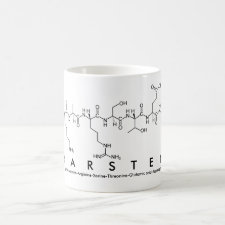
Authors: Linares AV, Falcimaigne-Cordin A, Gheber LA, Haupt K
Article Title: Patterning Nanostructured, Synthetic, Polymeric Receptors by Simultaneous Projection Photolithography, Nanomolding, and Molecular Imprinting.
Publication date: 2011
Journal: Small
Volume: 7
Issue: (16)
Page numbers: 2318-2325.
DOI: 10.1002/smll.201100248
Abstract: Abstract: Microscope projection photolithography is combined with nanomolding and molecular imprinting for the fast microfabrication of molecularly imprinted polymer (MIP) arrays in the form of micrometric islands of nanofilaments. Dot diameters from 70 - 90 μm are easily obtained using a 10x objective and a photomask carrying the desired pattern. The dots are composed of parallel nanofilaments of a high aspect ratio, 150 nm in diameter and several micrometers in length, which are obtained through a nanomolding procedure on porous alumina. The arrays are molecularly imprinted with the small molecule fluorescein or with the protein myoglobin. The fluorescein MIP arrays are able to specifically recognize their target, as demonstrated by fluorescence microscopy. A four-fold increase in binding capacity and imprinting factor (IF = 13) is obtained compared to non-nanostructured porous dots. Imprinting of the nanofilament arrays with the protein myoglobin as the template is also possible and allows for a high imprinting factor of 4.3. Such nanostructured microarrays of synthetic receptors obtained by projection photolithography have great potential in biosensor and biochip development
Template and target information: fluorescein, protein, myoglobin
Author keywords: Molecularly imprinted polymers, synthetic receptors, projection photolithography, nanowires, microarrays



Join the Society for Molecular Imprinting

New items RSS feed
Sign-up for e-mail updates:
Choose between receiving an occasional newsletter or more frequent e-mail alerts.
Click here to go to the sign-up page.
Is your name elemental or peptidic? Enter your name and find out by clicking either of the buttons below!
Other products you may like:
 MIPdatabase
MIPdatabase









